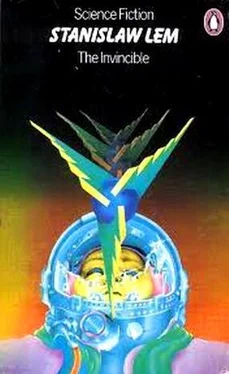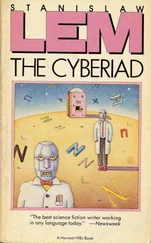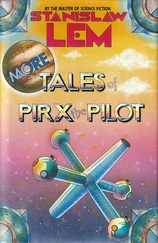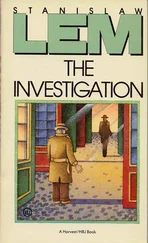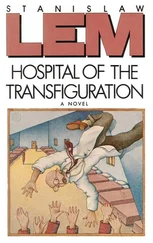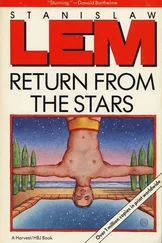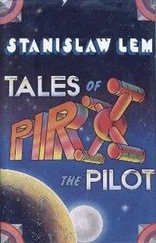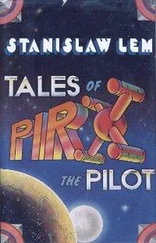Stanislaw Lem
The Invincible
(Translated from the German by Wendayne Ackerman)
German edition: Die Unbesiegbare, Verlag Volk und Welt, Berlin (East); 1957
Original Polish edition: Niezwyciężony, Wydawnictwo Literakie, Cracow
The Black Rain
In The Ruins
The Condor
The First
The Cloud
Lauda’s Hypothesis
Rohan’s Group
The Defeat
The Long Night
The Conversation
The Invincible
The Invincible moved across the outermost quadrant of the Lyre Constellation. The heavy cruiser was propelled through space by photon drive. It was the largest ship at the disposal of the space fleet based in this section of the universe.
The ship’s complement numbered eighty-three men, all of them presently asleep inside the hibernation tunnel. The flight distance was sufficiently short that it had not been necessary to resort to full hibernation; the men were simply kept in deep sleep, body temperature regulated so as never to fall below 50° F. Within the cruiser’s control center only the automats carried on their work.
Dead center in the direction finder hung the disk of a sun not much hotter than an ordinary red dwarf star. The moment the sun filled half the screen the space-drive automatically cut off. For a while dead silence reigned throughout the ship. The air conditioning system and the computers functioned noiselessly. The slight vibration ceased when the photon stream no longer emerged from the spacecraft’s stern. This stream had been like an infinitely long sword, sheathed in darkness, thrusting the cruiser ahead through the vastness of space. The Invincible still coasted along just under the speed of light; rigid, deaf and seemingly without any life aboard.
Tiny lights on the instrument panel reflected the reddish glow of the distant sun that loomed on the central videoscreen. Now the magnetic tapes began to move. Programed coded strips crept slowly into the intake slots of a series of instruments. Sparks flew from the transformers; and the current flooded into the supply network, accompanied by a faint hum that was not heard by any living tiling. Electromotors overcame the resistance of long dried-out lubricating oil and started humming. Their low roar soon changed into a highpitched moaning sound. Cadmium rods were pushed outwards by the auxiliary reactors; magnetic pumps squeezed liquid natrium into the cooling coils; a mild tremor ran through the ship’s stern. Faint rattling noises came from inside the hull as if swarms of tiny animals were busily scurrying about, scratching the metal walls with their sharp little claws. This was the sign that the repair robots had started out on their rounds, checking the solidity of the braces of the ship’s framework; making sure that the hull had not been damaged anywhere and that all seams were still welded tight. The entire ship came to life, filled with myriad noises and activities. Only the crew had not yet awakened.
Finally the last automat was fed the proper coded strip and began to send signals to the hibernation center, Antihibernation gas was injected into the cold air. Warm air streamed through the gratings in the floor, up towards the long rows of the sleeping cots. The sleeping men, however, appeared reluctant to wake up. Slowly they began to move their arms with feeble jerks, trying to ward off the nightmares and feverish fantasies that invaded the void of their icy slumber. Finally the first man opened his eyes. The ship had been fully prepared for this moment. For the past few minutes bright daylight had chased the dark shadows that filled the long corridors, the elevator shafts, the cabins, the control center, the workrooms, and the airlocks. And while the hibernation chamber resounded with the sighing and moaning of the drowsy men, the spaceship began its first braking maneuver, as if it were too impatient to await the complete awakening of the crew. Sheaves of fire emanated from the jets at the craft’s nose. A violent shock disrupted the velocity of the cruiser that had constantly traveled at the speed of light. The tremendous counter-forces produced by the forward jets tried to crush the Invincible whose stationary mass of eighteen thousand tons had been multiplied by its gigantic initial velocity. Everything that had not been nailed down tight began to move; lifeless objects seemed to come alive. Hermetically sealed maps bounced about on their rollers in the map room. In the galleys dishes rattled, the backs of the empty foam-rubber chairs began to shake, safety belts and wall ropes swung like pendulums in the long corridors of the decks. All the sounds of clinking glass, tin and synthetic products combined; the noise spread like a wave throughout the heavy cruiser. The hibernation center was filled with a din of voices. Following a brief transitory slumber the men now returned to the world of reality after having spent the past seven months in a state of limbo.
The spaceship kept losing speed. Red clouds shrouded the planet, obliterating the stars in the sky. An ocean became visible, reflecting the sun’s rays as though it were a convex mirror. Now the craft glided over a brownish continent dotted with craters. The crew, however, saw none of this; they were at their posts. A cloud passed through the path of the braking ray. A sudden white glimmer appeared as if quicksilver had exploded. The cloud disintegrated and vanished. For a moment the howling of the propulsion drive grew intense. The reddish disk down below became flat: the planet had turned into an expanse of land. Sickle-shaped dunes stood out, whipped by a strong wind. Strands of lava radiated from a nearby crater like the spokes of a wheel, reflecting the fiery glow of the rocket jets, and almost blotting out the sunlight.
“Central axis — full power! Static drive!”
The needle advanced slowly toward the next sector of the gauge; the landing maneuver proceeded according to plan. The spaceship hovered like a fire-spewing volcano balanced on its head. Half a mile below lay the scarred surface of the planet, covered by sandy ridges of rock.
“Central axis — full power! Brake static drive!”
Now the spot was already clearly to be seen where the braking ray hit the ground. A cloud of red sand rose from the flat surface. Violet bolts of lightning flashed, apparently without any sound, for the thunder was drowned out by the roaring gases. Gradually the potential difference evened out and the lightning disappeared. The spaceship descended steadily without any vibrations; like a mountain of steel held taut by invisible ropes.
“Central axis — half power! Small static drive!”
Steaming clouds of sand swelled up like ocean waves and sped outward in concentric circles. At the epicenter where the bunched braking ray had struck full force from a short distance away, neither steam nor sand had been left. The red, blistery mirror had changed into a lake of molten silicates which finally had evaporated in a column of shattering explosions. The primitive rock of the planet, bare as fleshless bones, turned soft.
“Cut down nuclear drive!”
The glowing blue of the atomic fire died down. A stream of diborane sprayed at a slant from the jet openings. Suddenly a ghostly green flooded the desert, crater walls and clouds. The basalt rocks would no longer remain in a molten state, just where the broad stern of the Invincible was supposed to touch down.
“Reactors zero power. Land with cold drive!”
The men’s hearts began to beat faster. They looked at the instruments. Their sweaty hands grasped levers. This last command meant there would be no turning back now. Soon they would be able to step down on terra firma; even if it was only the sand of a barren planet. Nevertheless they would see the sun rise and set again, see a horizon and clouds, and feel the wind.
Читать дальше
